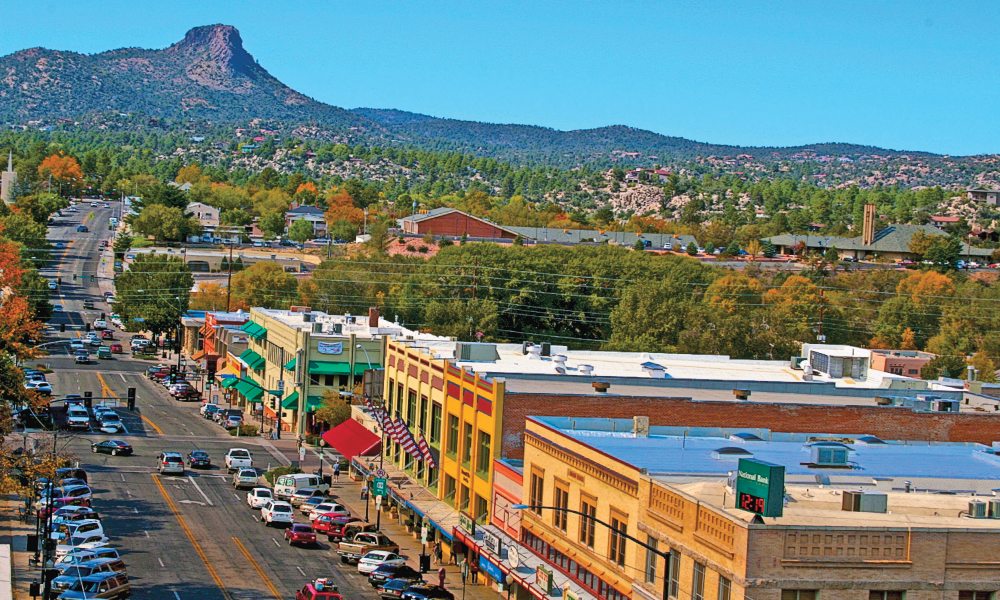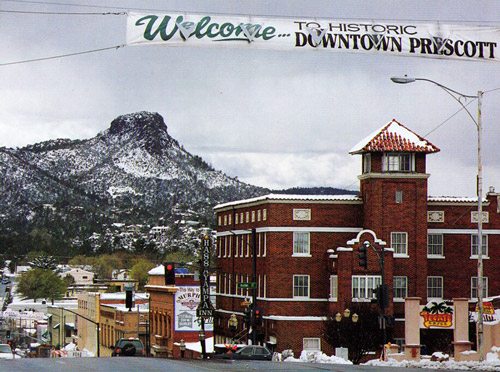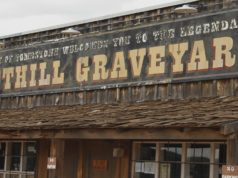
By Jennifer Marshall
Drive approximately one and a half hours northwest of Phoenix, and you will find yourself in the charming, historical City of Prescott. Situated at an elevation a little over 4,000 feet above Phoenix, Prescott sits amid the high desert and is full of forests, mountains and lakes, which provide ample outdoor recreational opportunities year round.
But Prescott also has a rich and colorful past that extends all the way back to the 1860s when Congress made Arizona an official territory in 1863. Fort Whipple, a military post about two miles northeast of Prescott, was the first established Territorial Capital of Arizona.
However, during May of 1864, the Territorial Capital of Arizona was moved to Prescott as that area was deemed a more convenient location for the capital. Prescott was also selected to serve as the County Seat of Yavapai County. Prescott was named in honor of the famous historian William Hickling Prescott, and Yavapai County takes its name from the Yavapai Native American Tribe.
The years between 1867 to 1877 saw a shift in the Territorial Capital of Arizona from Prescott to Tucson. Then, during the last quarter of 1877, Prescott was once again home to Arizona’s Territorial Capital. In 1889, the Capital was moved to Phoenix. Phoenix remained the Territorial Capital until Arizona became a state on February 14, 1912 whereby Phoenix became the State Capital and remains so to this day.
Back in its heyday, Prescott was a successful gold mining town, and saloons were a natural part of its landscape. Whiskey Row, a city block containing about 40 saloons, was an entertaining staple of society. So interwoven it was in Prescott’s daily life, Whiskey Row survived and even thrived after a massive fire on July 14,1900. In fact, many of the drinking establishments on Whiskey Row that were rebuilt after the fire have left a legacy as their buildings are now on the National Register of Historic Places.
And one such watering hole, The Palace Saloon, has been in operation since 1877 and is the oldest continuously run business in Arizona. Wyatt Earp, Virgil Earp and Doc Holliday are just a few of its most famous patrons.
Other buildings and sites in the city, such as the Yavapai County Courthouse, the Courthouse Plaza Historic District and the Arizona Pioneers’ Home, are also on the National Register of Historic Places. For a full list of historical sites and markers in Prescott, check out the National Register of Historic Places on the National Park Service website.
Prescott Yesterday and Today – A City for the Ages
Visits to Sharlot Hall Museum, The Phippen Museum and The Smoki Museum will each allow you to delve further into Prescott’s interesting history.
And don’t forget about Fort Whipple, which has its own unique past. Fort Whipple served as a military base during the years when Indian relations were tumultuous, and later, it was the base of operations for the Rough Riders during the Spanish-American War. And during World War I, Fort Whipple served as a hospital for those veterans suffering from the ravages of nerve gas and tuberculosis. Today, Fort Whipple contains the Bob Stump Veterans Affairs Medical Center along with the Fort Whipple Museum.
To totally immerse yourself into Prescott’s vibrant past, be sure to book a stay at one of the city’s premier historic hotels such as the Hassayampa Inn, the Hotel Vendome, the Hotel St. Michael or The Grand Highland Hotel; the first two are on the National Register of Historic Places.
Is it Press-cott or Press-kit?
The correct pronunciation is Press-kit, which rhymes with biscuit. And listen to any local speak, and that is how they pronounce it. But however you choose to say it—Press-kit or Press-cott—know that great fun and adventure await you in this city.
You can watch the full episode of Arizona Explorer HERE.










